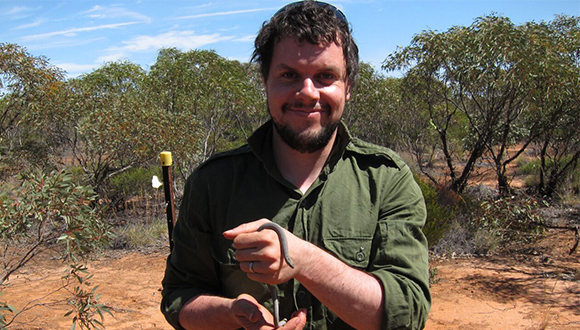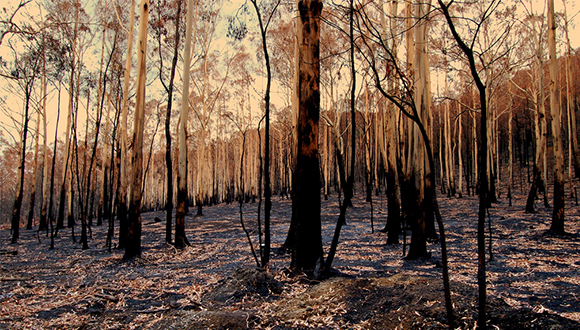A CEED Research Fellow will study fire effects to biodiversity in Catalonia
A CEED (Centre of Excellence for Environmental Decisions) Research Fellow has been recently awarded one of the five Victorian Postdoctoral Research Fellowships. He will travell to Spain to study the threat of fires to biodiversity at the CTFC (Forest Sciences Centre of Catalonia) and CREAF (Centre of Ecological Research and Forestry Applications).

Luke Kelly, from the University of Melbourne, has received the Fellowship which is part of Victoria's most prestigious science and innovation awards. Awarded by veski on behalf of the Victorian government, the Fellowship gives Luke the opportunity to spend two years as a guest researcher in Spain, followed by a third year at the University of Melbourne.
Luke has worked with CEED (through the University of Melbourne) as a research fellow for four years and credits the knowledge gained on the project to securing the grant. "I was thrilled to be offered the Fellowship. It's a fantastic career opportunity and I certainly owe some of the credit to the ARC CEED project," he said.
Luke's PhD research tested the hypothesis that 'pyrodiversity promotes biodiversity'.
"Working on the ARC CEED project provided me with an excellent opportunity to build on this work and to tackle new ideas and approaches to conservation management". He also adds, "I get to do fun things like building species distribution models in forest ecosystems, modelling biodiversity in Melanesia, surveying mammals in arid landscapes, and working with talented scientists from Melbourne and around the world."
Fires are now one of the biggest threats to biodiversity in Victoria. One of the greatest challenges of land management in Victoria is managing fire to reduce the risk to human life and property, yet maintain our globally significant biodiversity. "One reason this challenge is complex is because we make fire management decisions with imperfect information such as how plants and animals respond to fire and the probability of future events such as bushfires and droughts. There is also uncertainty about the effectiveness and cost of fire management options".

Luke said that being awarded the fellowship means he can further develop his skill set, research knowledge and international networks to better contribute to global conservation challenges. "It's also a great adventure for me and my family. My partner Clare and I have a 16-month year old daughter and we are really looking forward to getting involved in the local community in Solsona and learning the local languages."
So, why in Spain?
CTFC and CREAF are an ideal location for the collaboration. They include world leaders, such as Dr Lluis Brotons, CREAF and CTFC researcher, in modelling biodiversity responses to global change. They also offer access to cutting-edge fire and climate modelling tools, and provide access to their extensive European networks. "Spain is also ideal because its Mediterranean climate, vegetation, and fire regimes are similar to parts of Victoria. We face very similar threats. But there are some important differences – and these will help to make the approaches we develop more globally transferable."

Luke hopes his research will allow him to champion Australian fire science internationally. "I'll use this fellowship to develop a framework for predicting the impact of future fire regimes on biodiversity, and for designing and evaluating alternative fire management strategies," he said. "I hope to bring back new techniques and tools that will benefit Victorian communities and make economic savings, and help to secure the future of biodiversity across the flammable landscapes of Victoria".






